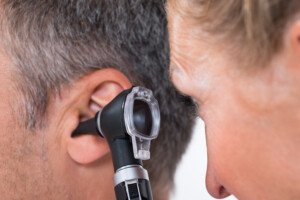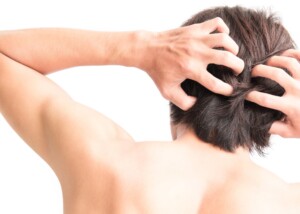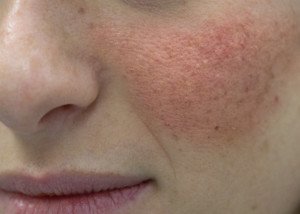Are you noticing crusty areas inside the folds of your ear and even on the lobe and/or behind the ear? Does it feel lumpy but can be picked off?
And why does it keep coming back no matter how much you clean there with soap and water?
First of all, you need not worry about basal cell carcinoma, the most common form of skin cancer, or squamous cell carcinoma, for that matter.
Neither of these cancers can be wiped or washed away.
If you have crusty crud that keeps recurring in and about one or both ears, whether or not it itches, there’s a strong likelihood it’s seborrheic dermatitis.
Seborrheic Dermatitis: Overactive Sebaceous Glands
“If the crusty ‘ear stuff’ is due to seborrheic dermatitis in the ears, then it can cause inflammation which can lead to painful skin cracks, scaliness and dry skin,” says Brynna Connor, MD, Healthcare Ambassador at NorthWestPharmacy.com and a family medicine practitioner.
“The skin at the ear canal may itch and turn red, and it also may develop bumps, dry out or thicken.”
Part or most of an earlobe may even be a dark pink. There won’t necessarily be itching or scaliness on the lobe, either.
The buildup of crust or thick flakes may also occur behind the earlobe at the bottom.
You’ll want to gently rub in a small amount of dandruff shampoo, leave it sit for a few minutes, then wipe it off with a wet cloth. Do this every morning and evening and see what happens.
It should result in quite an improvement within a few days. If it doesn’t, you can try over-the-counter hydrocortisone cream.
If that doesn’t work, you can get a prescription for a topical ointment to treat the problem.
More on Seborrheic Dermatitis
A common location is the scalp, resulting in dandruff. But any area of oily skin is vulnerable, and this includes inside and behind the ears.
Other common locations are the sides of the nose (they’ll turn red, scaly or crusty, and often have a burning-like itch), around and between the eyebrows, the forehead, the eyelids, and even about the lips and general area of the face. The upper chest and back may also be affected.

Seborrheic dermatitis on the nose.
The affected skin will have a color ranging from orange-pink to deep pink to pinkish-red. It may or may not flake or crust.
If you notice flare-ups or worsening of seborrheic dermatitis during periods of emotional stress, you’re not imagining this. It seemingly can be aggravated by stress, as well as fatigue, extreme weather, not bathing/washing enough, lotions that contain alcohol, acne and obesity.
Dr. Connor adds, “Sometimes seborrheic dermatitis is confused with psoriasis, so one needs to see their physician to be adequately diagnosed.
“A swab or culture may need to be taken to determine if there is yeast or bacterial overgrowth as well.”
 Brynna Connor, MD, serves as the Healthcare Ambassador at NorthWestPharmacy.com, the world’s most reviewed and independently five-star rated online pharmacy. She owns a private practice in Austin, Texas and is board certified in family medicine.
Brynna Connor, MD, serves as the Healthcare Ambassador at NorthWestPharmacy.com, the world’s most reviewed and independently five-star rated online pharmacy. She owns a private practice in Austin, Texas and is board certified in family medicine.
 Lorra Garrick has been covering medical, fitness and cybersecurity topics for many years, having written thousands of articles for print magazines and websites, including as a ghostwriter. She’s also a former ACE-certified personal trainer.
Lorra Garrick has been covering medical, fitness and cybersecurity topics for many years, having written thousands of articles for print magazines and websites, including as a ghostwriter. She’s also a former ACE-certified personal trainer.
.










































